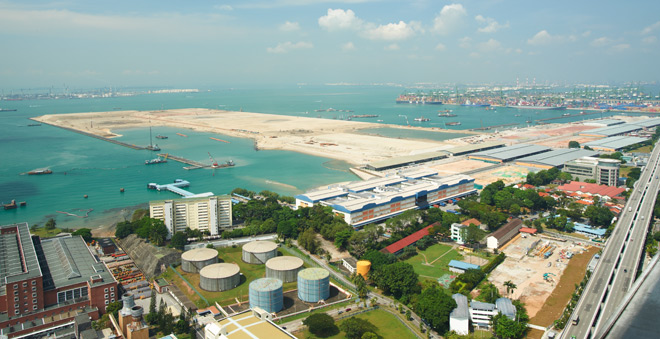Coastal Protection
COASTAL PROTECTION
With most of Singapore being within 15 m above Singapore Height Datum and around 30 per cent of our island being less than 5 m above Singapore Height Datum, any additional increase caused by climate change is an immediate threat.
Protecting our coastline and improving drainage is one of our priorities in dealing with the effects of climate change.
To cater for long-term sea level rise, the minimum land reclamation level in Singapore was raised from 3 metres to 4 metres above the Singapore Height Datum in 2011. This level is adequate in addressing projected sea level rise under the Second National Climate Change Study. PUB and related agencies will continue to review the minimum reclamation levels with information from new studies available.

Minimum platform levels for new reclamation projects were increased to cope with potential rising sea levels.
Safeguarding Our Coastline
Our current efforts to defend our coastal areas from erosion include the construction of walls and stone embankments covering 70 per cent to 80 per cent of Singapore’s coastline. The rest are natural areas such as beaches and mangroves. Coastal engineering, wave dynamics, coastal morphology and hydrodynamics all contribute to the development of appropriate protective measures.
The Coastal Adaptation Study (CAS) was commissioned by the Building & Construction Authority (BCA) to assess the potential impacts of coastal inundation under possible climate change scenarios, and to study possible long-term adaptation measures. The Government is reviewing the findings of the CAS to develop long-term strategies to protect Singapore’s coasts.
Our Natural Barriers
Local institutions are collaborating on research into natural coastal protection measures such as the use of plants like mangroves and sea grasses as natural barriers to inundation.
Although plants provide natural protection from the effects of climate change, they are also vulnerable to its effects. This is because climate change alters our ecosystem’s natural processes such as soil formation, nutrient storage and pollution absorption. This can affect the ability of natural barriers to mitigate flooding and tidal surges.

